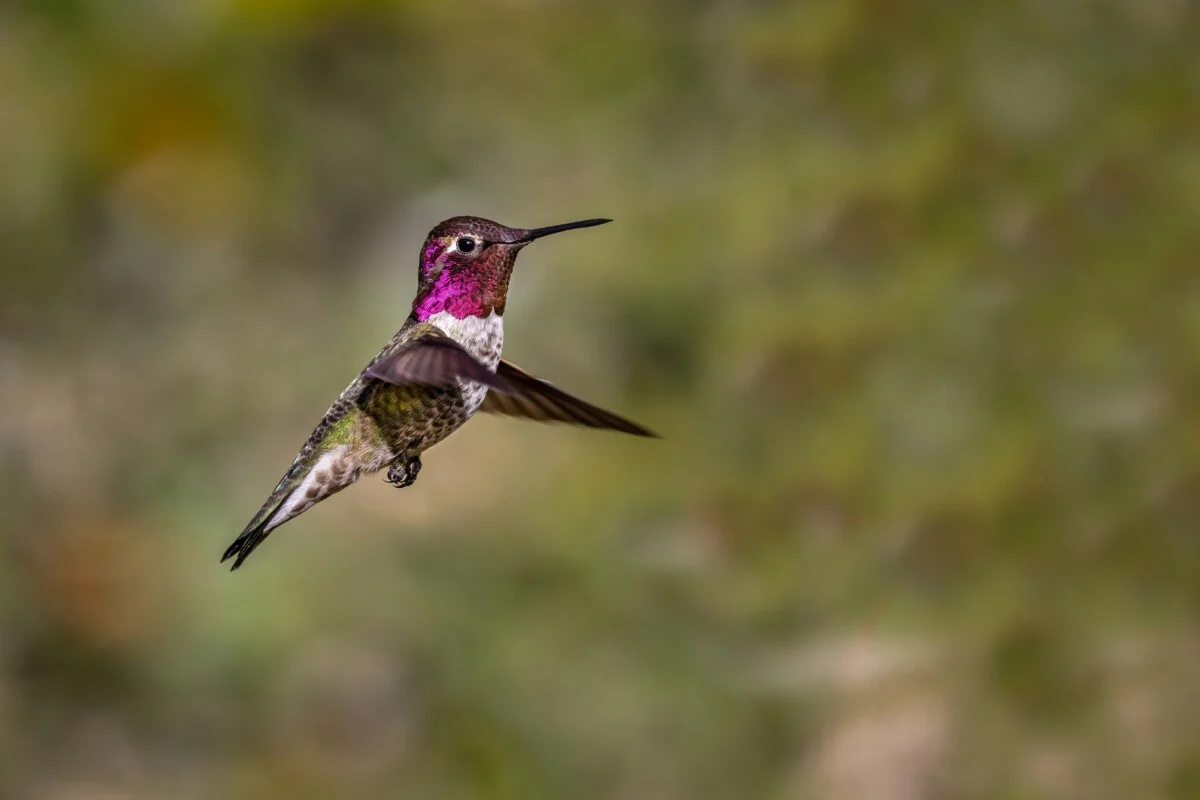
If this is your first year feeding hummingbirds, first of all, welcome to the club. They’re pretty great, right? But as summer turns to autumn, you’ve likely begun to notice fewer visitors to your feeder. Naturally, you need to know when it’s time to take down your hummingbird feeder for the year.
Like so many other birding-related questions, the answer is – it depends.
It all depends on what species are visiting your feeder, where you live and how cold your winters are. Knowing which species visit your feeder will give you a much better idea of when they begin migrating. Practicing good fall feeder hygiene will also ensure your feathery visitors have the energy needed for their trip.

Before we get to the fall feeding tips, let’s take a look at the most common hummingbirds found in North America. Here in the U.S., we host around two dozen species of hummingbirds.
There are fifteen species that live here and several others that make their homes elsewhere but often bounce in and out of the country for a visit. You’re more likely to spy those birds in the southern states.
One of these four is likely the species visiting your feeders.

Ruby-throated Hummingbirds: These are the most common hummingbirds in the eastern United States. They migrate from their breeding grounds in the eastern U.S. to wintering areas in Mexico and Central America.

Black-chinned Hummingbirds: Found in the southwestern U.S., these birds migrate to Mexico for the winter.

Anna’s Hummingbirds: These are more likely to be found year-round along the West Coast of the U.S., particularly in California. They may migrate short distances depending on food availability.

Rufous-tailed Hummingbirds: Common in the western U.S., these birds migrate to Mexico and Central America.
When To Bring Your Feeder In
If you live in the northern part of the United States, your seasonal hummingbird population will likely start to head south in late August or early September. You can probably bring your feeder in at the beginning of October.
That being said, my sweetie will often leave his feeders set up for any stragglers coming through. (He’s the hummingbird king in our family.) He’s had birds visit as late as November. With all the other feeders brought in for the season, I’m sure those late-migrating birds are happy to find his feeders still up.

Likewise, if you live in the Southern part of the states, birds will tend to stick around longer with your warmer weather, so you can leave your feeders out till late fall.
It’s not uncommon to notice an uptick in visitors in early fall, as migrating birds will stop by for a sip.
A good rule of thumb is to keep an eye on your feeders. As the frequency of hummingbird visits drops, make a note of when you can go several days without a bird stopping by, and start keeping track. You should bring your feeder in about three weeks later.
Until that time, you’ll want to continue to provide fresh nectar in clean feeders. You might even find yourself having to refill feeders more frequently for a few days due to hungry migrating birds passing through.
Now, let’s move on to the fall feeding tips.
1. Know the Species You Feed
Likely, the most important factor in handling fall hummingbird feeding is to know what species are found where you live. Grab your copy of the National Audubon Society Field Guide to North American Birds, or hit up Google.
2. Top Up More Often With Less Nectar

As the steady summertime traffic to your feeder starts to taper off, you’re more likely to have nectar sitting in your feeder untouched. It’s important to continue to offer nectar to the birds that are still there, as well as birds that may pass through while migrating. It’s better to fill your feeders only a quarter of the way full and change stale nectar every few days.
3. Don’t Stop Cleaning

Even as the temperatures start to cool, you still need to clean your feeder once a week and add fresh nectar every few days. This is especially important if you’re experiencing a seasonably warm fall.
4. Watch Out For Cold Snaps

Something else to keep in mind when feeding hummingbirds in the fall is the cold weather. Freezing temperatures can cause both glass and plastic feeders to crack. Keep glass feeders filled no more than halfway during cold weather. Plastic feeders can grow brittle over several seasons of exposure to heat and the elements. Fall is a good time to inspect feeders for cracks or signs of wear and replace worn-out feeders.
If you plan on leaving your hummingbird feeders out for migrating birds, bring them in at night when a hard frost is expected and put them back outside in the morning.
5. Monitor Your Feeder

Truly, the best thing you can do in the fall is to check on your feeder frequently. Pay attention to how many birds you notice and how much nectar they are going through. This is the best way to support these beautiful birds on their annual trek to South America. By ensuring they have a clean feeder with fresh nectar, you’re more likely to ensure they visit again next year.

Get the famous Rural Sprout newsletter delivered to your inbox.
Including Sunday musings from our editor, Tracey, as well as “What’s Up Wednesday” our roundup of what’s in season and new article updates and alerts.


